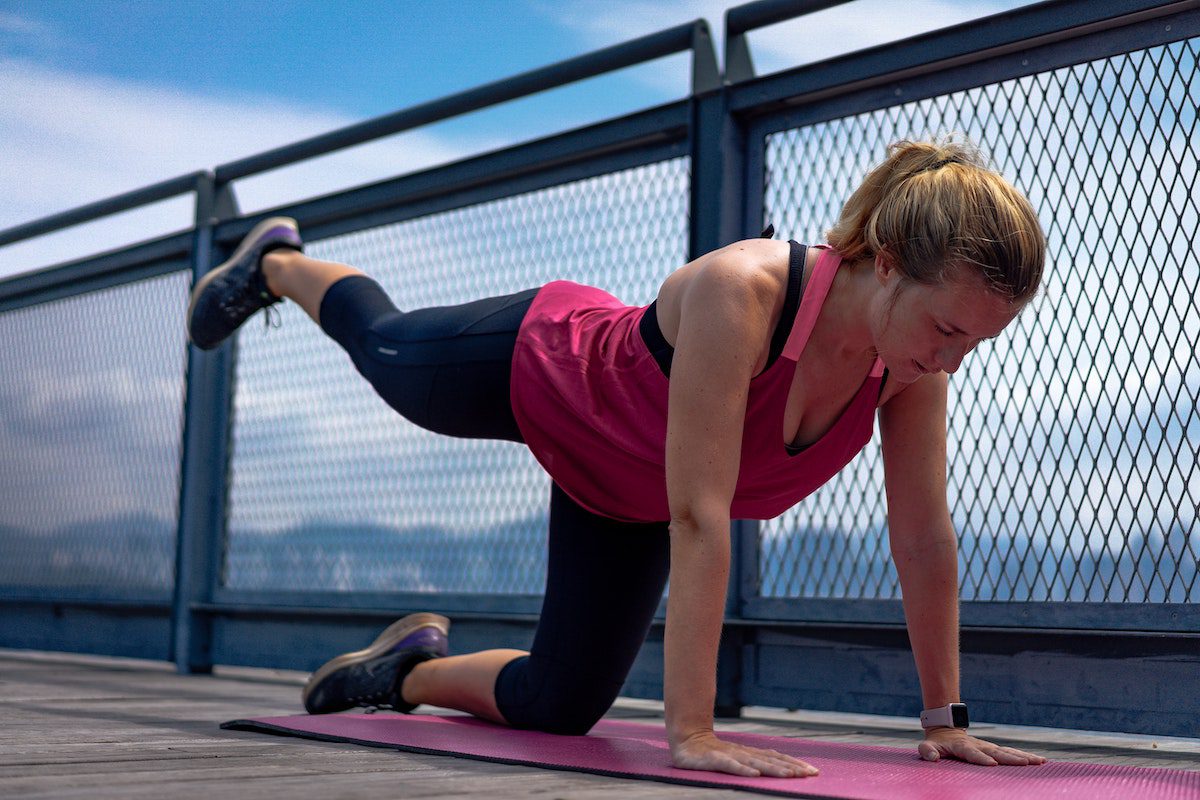By, Chelsea Fechtner, MScN, CN
Before diving in, consider what your own optimal movement routine would look like.
What types of activities will you be doing?
Are you moving with others or alone?
How will your movement routine make you feel?
Hopefully these questions can start off your exploration and help you begin to consider your own personal preferences when it comes to movement. Below are some takeaway points from exercise interventions and research, as well as strategies for building your own movement routine.
High-Intensity Interval Training
High-intensity interval training (HIIT) has been shown to improve insulin sensitivity, lower body fat, increase HDL cholesterol (aka good cholesterol), and improve vascular function in women with PCOS (1). HIIT training is unique because it combines short bursts of vigorous movement with intervals of more moderate or low-intensity movement, or even rest time. HIIT workouts also tend to be short, lasting anywhere from 10-30 minutes.
Cardio
We know that cardio (running, brisk walking, cycling, etc) is good for our heart and overall cardiovascular system, however it may also be helpful for weight loss (2). Both moderate intensity and more vigorous intensity cardio provides benefits, however vigorous activities that get your heart pumping and make it more difficult to hold a conversation may provide even more cardiovascular benefits (4,5).
Resistance and Strength Training
Resistance training has been shown to reduce waist circumference and body fat as well as increase lean muscle mass in women with PCOS (6). It also has been shown to have a positive effect on androgens and insulin resistance (5,6). Including resistance and strength training activities that focus on major muscle groups like legs, hips, back, chest, abs, shoulders, and arms can be a great way to mix it up if you’re used to sticking to cardio. If strength training feels new and intimidating to you, it might be helpful to start slow with light weights, resistance bands or even body weight exercises. Another way to build a strength training routine is by scheduling a session with a personal trainer to learn proper form and alignment, as well as specific exercises. One session may be enough to build confidence and learn a supportive strength training routine to move forward with on your own.
Mindful Yoga
Including yoga in your movement routine can be a great way to prioritize stretching, relaxation and mindfulness to help support rest and recovery from more intense movement. Regular mindful yoga can also be complementary to a PCOS management plan. Specifically, yoga may improve androgen levels, which can result in improvements in acne and menstrual regularity (3). Improvements in anxiety and depression in those with PCOS have also been reported from including a regular mindful yoga practice (3).
Building a Movement Routine
Now that you have a deeper understanding of the benefits of exercise, it’s time to reconsider your own movement routine to make sure it is aligned with your goals and lifestyle. Below are five steps to help your get started!
Determine your WHY for Staying Active
- What are your top 3 motivators?
- What do you hope to achieve with your movement routine?
- How will you measure success?
Create 1-2 Movement Goals
Start by creating a goal that feels accessible for your current schedule and fitness level. Consider adding a fun and engaging element such as taking a walk after dinner while listening to your favorite podcast.
Build Supportive Systems
Building habits is hard work, so it’s important to set yourself up for success with supportive systems. Here are some examples:
- Lay out workout clothes the night before if you plan to include an activity first thing in the morning.
- Set an alarm to alert you to wrap-up your workday on time if you plan to head to the gym after work.
- Find a workout partner to join you for a yoga class or evening run.
Celebrate Wins
All progress is progress worth celebrating! Be sure to celebrate even the smallest wins because they are evidence that you are making changes to support your health and well-being. It can also be helpful to revisit and reevaluate goals often to make sure they are aligned with your overall vision as well as your schedule.
Stay Consistent
As mentioned above, there are so many benefits to all types of movement and it’s more important to find what works for YOU rather than following the latest workout trends. Consider including a variety of movement types and include cardio, strength training and ideally stretching or yoga for a well-rounded routine.
Overall, there are many proven benefits of including a movement routine in your PCOS wellness plan. Consistent movement is supportive for cardiovascular health, body composition, hormone balance, insulin sensitivity and so much more. However, the arguably most important aspect of movement is finding activities that you enjoy and will be able to commit to on a regular basis!
References
- Almenning, I., Rieber-Mohn, A., Lundgren, K., Shetelig Løvvik, T., Garnæs, K. and Moholdt, T., 2015. Effects of High Intensity Interval Training and Strength Training on Metabolic, Cardiovascular and Hormonal Outcomes in Women with Polycystic Ovary Syndrome: A Pilot Study. PLOS ONE, 10(9), p.e0138793.
- dos Santos, I., Ashe, M., Cobucci, R., Soares, G., de Oliveira Maranhão, T. and Dantas, P., 2020. The effect of exercise as an intervention for women with polycystic ovary syndrome. Medicine, 99(16), p.e19644.
- Patel, V., Menezes, H., Menezes, C., Bouwer, S., Bostick-Smith, C. and Speelman, D., 2020. Regular Mindful Yoga Practice as a Method to Improve Androgen Levels in Women With Polycystic Ovary Syndrome: A Randomized, Controlled Trial. Journal of Osteopathic Medicine, 120(5), pp.323-335.
- Patten, R., Boyle, R., Moholdt, T., Kiel, I., Hopkins, W., Harrison, C. and Stepto, N., 2020. Exercise Interventions in Polycystic Ovary Syndrome: A Systematic Review and Meta-Analysis. Frontiers in Physiology, 11.
- Shele, G., Genkil, J. and Speelman, D., 2020. A Systematic Review of the Effects of Exercise on Hormones in Women with Polycystic Ovary Syndrome. Journal of Functional Morphology and Kinesiology, 5(2), p.35.
- Wright, P., Corbett, C., Pinto, B., Dawson, R. and Wirth, M., 2021. Resistance Training as Therapeutic Management in Women with PCOS: What is the Evidence?. International Journal of Exercise Science, 14(3), pp.840-854.




